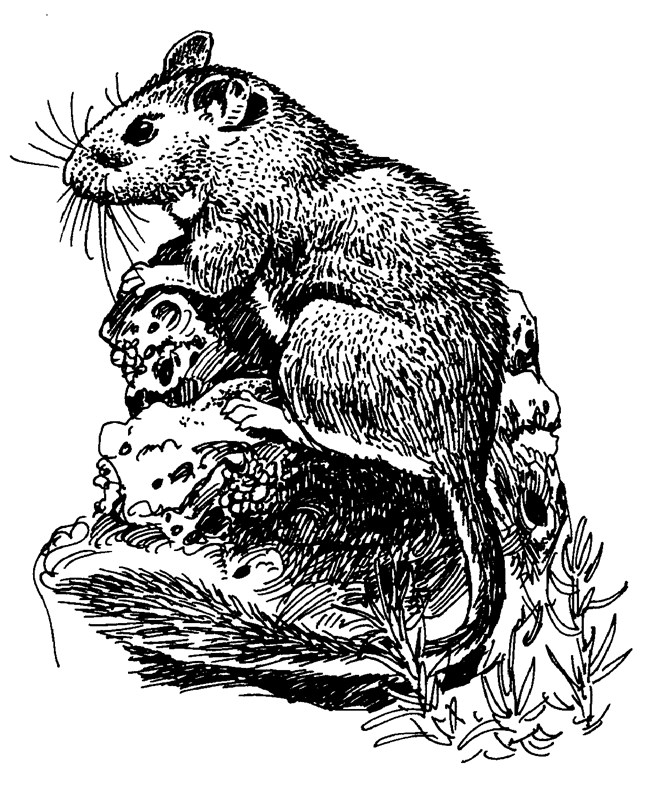
NPS Illustration Life in the LavasLife at Craters of the Moon lives in the shadow of the Monument's volcanism - figuratively and literally. Over millennia the living landscape was periodically sterilized by new flows of molten rock. Each time life was set back, receding to the places where it was not incinerated. No sooner had the lava cooled, however, than windblown fungal spores and bacteria began to exploit the new landscape, setting the stage for the more visible life that would follow. Life Gets StartedWith a trace of windblown soil and a few nutrients added by microscopic organisms, inconspicuous plants begin their life. They start growing in the lava's nooks and crannies where living things compete for rare water just a few critical inches away from the desiccating winds and searing heat of the surface. Life hangs on at Craters, anchored by the microscopic root hairs of over 300 species of plants, each uniquely adapted to life in a place that, at first glance, appears lifeless. 
NPS Illustration Diversity IncreasesUpon the plants, more than 175 species of vertebrates depend. Woven into this living fabric are thousands of species of invertebrates and microscopic organisms, each occupying niches only they can fill. With time comes the accumulation of soil in Craters' crevices and an increasing diversity of life. Biomass, or the total weight of all the living things in an area, also increases as a flow ages. Over eons the land loses its volcanic identity to the ever more complex array of plants and animals that colonize the surface. At most of Craters, however, life is fresh and new; a mere 2,000 to 15,000 years have passed since an eruption cremated what lived before. Life at Craters proceeds along a path defined by extreme heat and cold, a lack of water and soil, and competition between living things for limited resources. Every few thousand years the path abruptly ends beneath a wall of lava and life's clock is reset to zero. EcologyStudying the interrelationships along the way is the study of ecology. You and your class will examine Craters' ecology in the following activities and on your field trip. You will learn how living and nonliving parts of the Craters ecosystem are interconnected and how plants and animals are adapted to their habitats. Through the study of ecology, you will deepen your understanding of the way of life, its limitations, and our connections to it. |
Last updated: November 2, 2021
